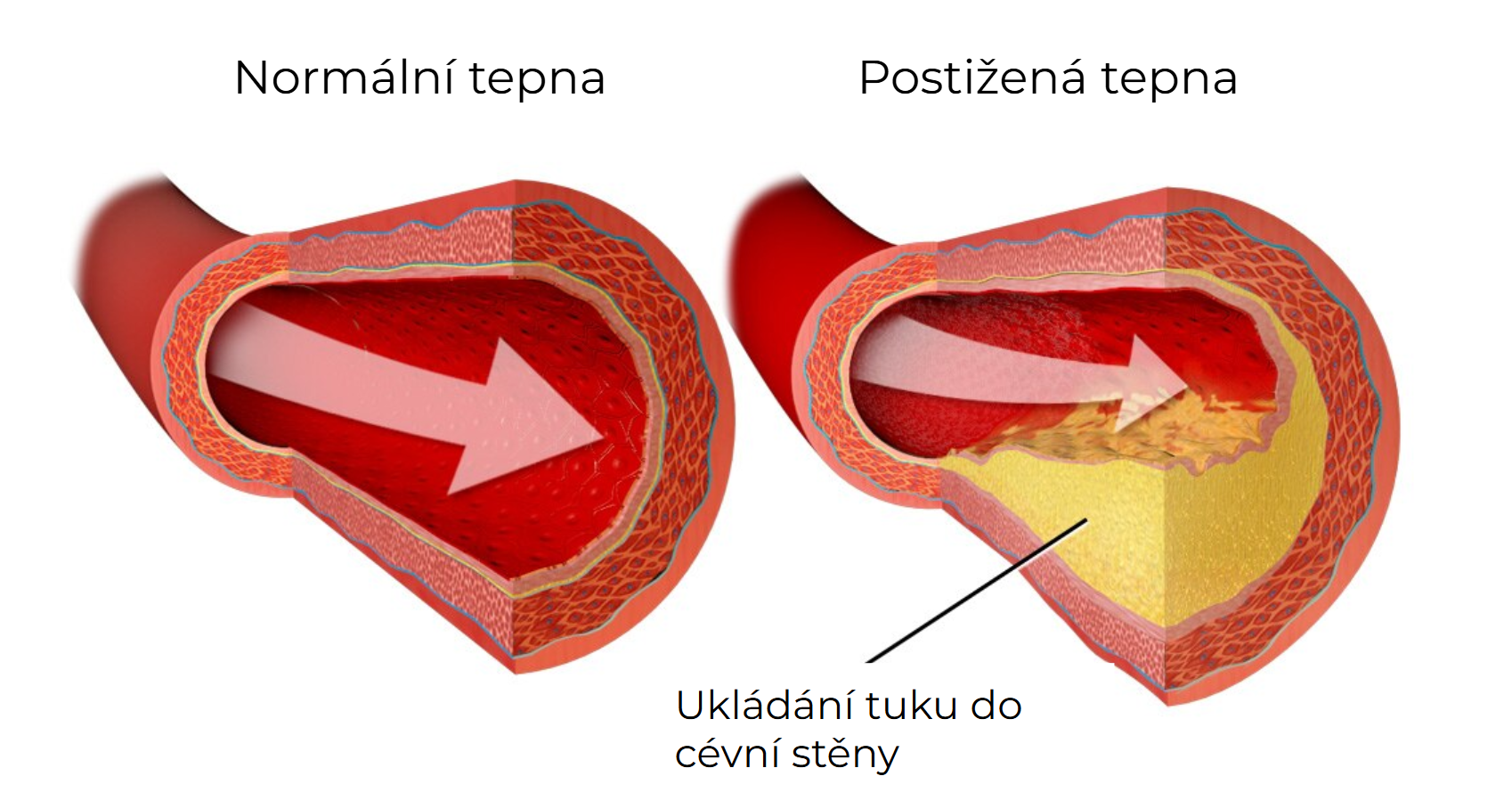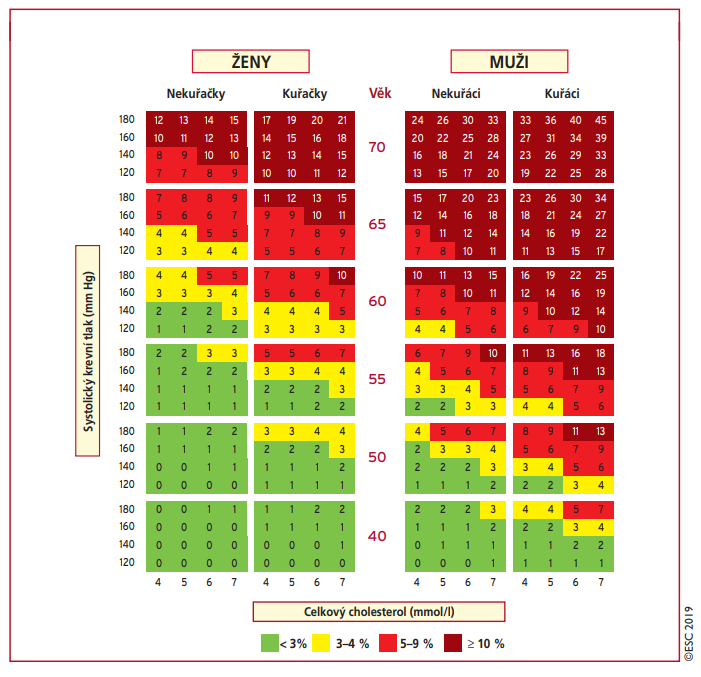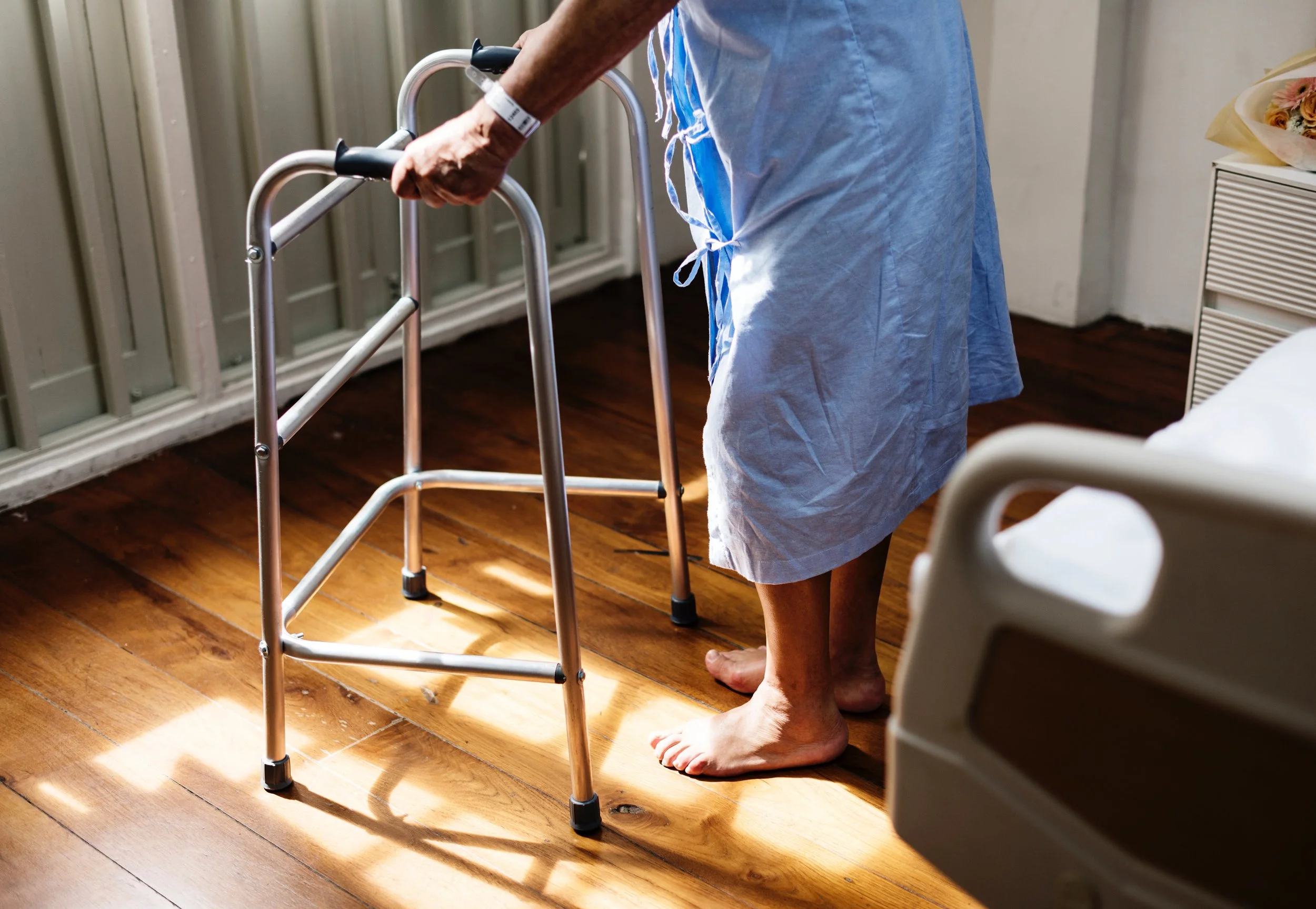High blood pressure
High blood pressure is referred to as hypertension. If there is high pressure in the arteries of the main circulation, we talk about the so-called arterial hypertension, if there is high blood pressure in the arteries of the pulmonary circulation, it is pulmonary hypertension. In the following, arterial hypertension will be discussed, which is much more common and is therefore often described only by the abbreviated term hypertension.
Blood pressure naturally increases during exertion and naturally decreases at rest, after exertion or for example during pain. The value of blood pressure above which we speak of high blood pressure or hypertension is determined by expert consensus. In the past, this limit used to be 160/95, since 1998 it has been set at 140/90. In the US, in 2017, this limit was tightened to 130/80. In 2024, a new limit of 120/70 was added in Europe for the so-called elevated blood pressurewhich is not yet assessed as hypertension but may be associated with a higher risk of cardiovascular disease. We therefore refer to values higher than 120/70 but lower than 140/90 as elevated blood pressure.
Definitions and blood pressure cut-off values according to the European Society of Cardiology Recommended Practice 2024.
Arterial hypertension is one of the most common diseases in general. In the adult population, it occurs in approximately 33% of individuals. Its incidence increases with age. It occurs slightly more frequently in men and at an earlier age than in women. Over the age of 80 years, hypertension occurs in almost 80% of individuals according to the European definition (>140/90) and in more than 90% of individuals according to the American definition (>130/80).
Prevalence of hypertension according to the European definition (blood pressure > 140/90) in different age categories. In the age category 60-70 years, approximately 60% of the population has hypertension, and in patients over 80 years of age it is up to 80% of the population. Modified from the author of Carratalá, 2023.
Blood pressure is given in units of "mmHg", or millimetres of mercury. Sometimes this unit is also called "Torr". The value before the slash is the systolic pressure, the value after the slash is the diastolic pressure. Systolic pressure is higher than diastolic pressure and occurs during systole, or contraction of ventricles, when blood is forced out of the heart. In diastole, or the period between contractions of ventricles, the pressure decreases and is called diastolic.
Blood pressure measurements should be taken after 5 minutes of rest, sitting or lying down. Blood pressure is measured on the arm or wrist of the upper limb. Values on the arm are not different from those measured on the wrist. However, blood pressure measurements on the wrist are less accurate. Blood pressure can be measured with commonly available digital tonometers, but it is necessary to check that the device is certified. In the case of a large arm circumference, a larger cuff should be chosen; with a normal cuff size, the measured value would be falsely higher in this case. When blood pressure is measured in a doctor's office, it is almost always higher by approximately 10 mmHg than the normal values measured in the home environment. In cases where the blood pressure values measured in the doctor's office are repeatedly significantly higher than in the home environment, we speak of the so-called white coat syndrome.
Measure blood pressure after at least 5 minutes of rest, preferably on the arm and using a cuff of appropriate size. Any certified digital tonometer can be used.
High blood pressure is also sometimes called the "silent killer". "Silent" is called because, with few exceptions, it is not accompanied by any difficulties. If the blood pressure is elevated for several years, the arteries in the body can become seriously affected, overloaded and altered by prolonged high pressure, and fat can be deposited in their walls, and they can become calcified and narrowed. When the fatty plaques rupture, the artery may close entirely with a blood clot. These vascular complications can lead to stroke or myocardial infarction, hence the term 'killer' in the name. Furthermore, blood vessels in the kidneys, retina and lower extremities can be damaged by this process.
Arterial involvement in long-term untreated hypertension - fat is deposited in the vascular wall. This process is called atherosclerosis.
In rare cases, very high blood pressure can cause immediate damage to organs such as the brain or heart. In such cases, high blood pressure is accompanied by headache, vomiting, chest pain or shortness of breath. This condition is called a hypertensive crisis, and when it develops, the emergency medical services must be contacted quickly, and rapid lowering of blood pressure is necessary to treat it. Very high and difficult to correct blood pressure can also accompany a rupture of a major artery in the body, called an aortic dissection. In this case, severe to severe chest pain is present at the same time. This is an immediate threat to life and a timely call to the emergency services can save a life.
High blood pressure occurs most often for no apparent reason, most likely on the basis of congenital dispositions. Only about 10% of cases are caused by some other treatable disease, most often kidney disease or increased production of certain hormones. In these cases, we are talking about hypertension secondary, and treatment of the underlying disease can lead to normalization of blood pressure. Secondary hypertension is more common at a young age and is often harder to control with medication.
If hypertension is newly detected, the possible causes and consequences of hypertension are investigated by taking blood and performing a 12-lead ECG. In the blood sampling, the level of ions, kidney function, cholesterol level and the level of hormone regulating thyroid function are analyzed. The ECG curve can then highlight rhythm disturbances or a myocardial infarction in progress. The cardiovascular risk of the patient is also determined using a table. Our online calculator can also be used for the calculation.
Percentage probability of a specific individual developing a cardiac event in the next ten years as a function of age, sex, systolic blood pressure, cholesterol levels and smoking. Adapted from the European Society of Cardiology Recommended Practice.
For all individuals with elevated blood pressure or hypertension, we try to influence the lifestyle so that blood pressure is lowered naturally. Lowering blood pressure can be achieved by getting enough physical activity, reducing weight in obese patients, limiting excess salt in the diet or limiting alcohol intake. Adequate amounts of vegetables and fruit in the diet have also been shown to lower blood pressure.
Enough exercise and a healthy lifestyle naturally reduce high blood pressure.
Treatment with blood pressure-lowering drugs - antihypertensives is recommended for all individuals with hypertension, that is, blood pressure higher than 140/90 in a doctor's office, following the recommendations for its measurement. When high blood pressure is first detected, white coat syndrome should be ruled out and ambulatory or home blood pressure monitoring should be performed to verify the diagnosis of hypertension before treatment is initiated. If the blood pressure measured at home averages more than 135/85, the diagnosis is confirmed. In patients who have had a myocardial infarction or other cardiovascular disease, treatment with antihypertensive drugs is recommended at blood pressures above 130/80. In this case, treatment must be adjusted. Older frail patients in particular may be at risk of these side effects of antihypertensive treatment. Systolic blood pressure is more important than diastolic blood pressure in terms of the risk of developing complications, and if treatment achieves a reduction to the desired level, it is no longer necessary to intensify treatment in the event of a persistent increase in diastolic blood pressure.
Reducing blood pressure with drugs can be achieved by draining, blocking the influence of the stress autonomic nervous system (sympathetic), directly affecting the musculature of blood vessels or blocking the hormonal system regulating blood pressure. Less often, substances acting centrally, at the level of the brain, are used.
Schematic representation of the main groups of antihypertensive drugs according to the mechanism of action.
Drugs with a draining effect, or diuretics, increase urine production most often by removing sodium from the body through the urine, which binds water. These drugs often cause a drop in the level of potassium in the blood and this level needs to be checked by blood sampling. Another mechanism to achieve drainage is by blocking the hormone aldosterone. In this case, in turn, potassium builds up in the blood and its level must also be monitored. Last but not least, drainage can be achieved by drugs that increase the waste of glucose into the urine. These drugs are also used to treat diabetes. Dehydrating drugs are very effective in lowering blood pressure. Increased drainage of the body can be beneficial in concomitant heart failure. However, excessive drainage can impair kidney function or cause fainting, especially in the elderly.
Drugs that block the effect of the stress component of the volitional nervous system are called beta-blockers. These drugs also lower the heart rate. They are particularly useful in patients with certain heart rhythm disorders accompanied by rapid heartbeat, in patients with heart failure or after myocardial infarction. However, they can sometimes cause excessive slowing of the heart rate or weight gain. In men, they can cause erectile dysfunction.
Drugs acting directly on the vascular wall are calcium channel blockers. They block the function of calcium in the musculature of the arteries so that they cannot contract sufficiently and increase blood pressure. These drugs are very safe. They can sometimes cause or worsen leg swelling because blood stays longer in the dilated blood vessels of the lower limbs and water from the blood gets into the subcutaneous tissue. These swellings often disappear when therapy is continued, sometimes a reduction in dose, a change to another preparation of the same group or a combination with a drainage medicine will help.
The most commonly used antihypertensive drugs are drugs affecting the renin-angiotensin-aldosterone system. This hormonal system regulates blood pressure and is abbreviated as RAAS. This group includes substances that block the ACE enzyme, the so-called ACE inhibitors, abbreviated ACEI, as well as substances that block angiotensin II receptors, abbreviated ARB, and a substance that blocks the enzyme neprilysin, which is available only in combination with ARB and the resulting combination is called ARNI. The group affecting the RAAS also includes the aldosterone-blocking diuretics mentioned above.
ACEI treatment is safe and well tolerated. Occasionally, a dry irritating cough may occur, which subsides after discontinuation. Rarely, it may cause swelling in the face. ARBs have even fewer side effects than ACEIs and do not cause irritant cough. They are often prescribed to younger patients, especially in combination preparations with calcium blockers, where one tablet contains both drugs. In patients with heart failure, ACEIs are slightly preferable to ARBs. However, ARNIs, the above-mentioned combination preparations of an ARB and a neprilysin blocker, have the best effect in patients with heart failure, but are not commonly used to treat hypertension in otherwise healthy hearts.
Other, less frequently used antihypertensives include substances that reduce pressure by central action at the level of the brain. These include, for example, rilmenidine, moxoinidine, urapidil or alpha-methyldopa. They are often added to treatment only when hypertension persists even with full treatment with other antihypertensives or in other special cases.
The treatment of high blood pressure should be set so that the patient does not have difficulties, that is, in particular, so that he does not have drops in blood pressure accompanied by a feeling of weakness, falls or syncope. Blood pressure fluctuates naturally and treatment should not result in either significantly low or high blood pressure. This is sometimes difficult to maintain and therefore the doctor often chooses an individual strategy to achieve the least risk to the patient. Treatment should be taken regularly. Any omission of medication should be reported at the time of blood pressure measurement to avoid a poor assessment of the situation by the doctor. It is also not advisable for patients to adjust the dose of medication daily according to blood pressure measurements.
In frail elderly patients at increased risk of falls, it is necessary to avoid drops in blood pressure during treatment and, if necessary, to reduce the dose of antihypertensive drugs.
Regular measurement of blood pressure in the home environment can help the doctor correctly adjust the treatment with antihypertensive drugs. Recently, due to the availability of quality home blood pressure measurement devices, this strategy is becoming more common. It is advisable to measure blood pressure, for example, once a week, and additionally when there are difficulties in the form of weakness, fatigue, headache, palpitations or chest pain. In the event of chest pain, the emergency services should be called at the same time, as this may be a dangerous myocardial infarction. If the measured blood pressure is abnormally high or low, it is advisable to repeat the measurement after a few minutes to rule out measurement error.
Arterial hypertension is one of the most common diseases in general. Its treatment is based on regimen measures and treatment with blood pressure lowering drugs. Most of these currently used preparations are safe and effective. The most common side effect is excessive lowering of blood pressure, sometimes accompanied by weakness or syncope. Regular measurement of blood pressure by patients at home helps physicians to adjust long-term treatment well.
Frequently Asked Questions
-
When measuring blood pressure, it is ideal to be at rest for at least 5 minutes, sitting comfortably and with the arm supported at body level.
-
In the case of abnormal values, it is advisable to repeat the measurement to exclude measurement error, or to wait for a while before taking a control measurement, so that the rule of being at rest for at least 5 minutes is observed.
-
At least once in a lifetime, it is advisable to measure the blood pressure in both arms and compare the values to see if they approximately correspond. Too low a value repeatedly measured on one arm compared to the other may indicate a narrowing of the brachial artery in the limb with low blood pressure. It is therefore always necessary to measure the pressure subsequently on the limb where the pressures were higher.
-
Blood pressure naturally fluctuates and so, with treatment in place, blood pressure may occasionally be low - i.e. systolic blood pressure less than 100 mmHg. If you do not have difficulties with such low blood pressure, there is no need to adjust the treatment. If you have difficulties, contact your doctor and he will decide how to adjust the antihypertensive treatment.
-
It depends on the diseases you have. If you don't have any heart or blood vessel disease yet, a blood pressure measurement every two years as part of a preventive check-up is enough. If you are already taking medication to lower your blood pressure, measure your blood pressure if you have problems such as headache, shortness of breath, weakness, syncope. Otherwise, an occasional measurement, for example, once a month, is sufficient.
-
Yes, that's common. Blood pressure values in the home environment tend to be lower by about 5-10 mmHg. If the difference in values is more than 20 mmHg, we are talking about white coat syndrome.








